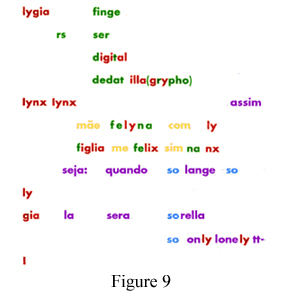Poetry (from the Greek 'poiesis'/ποίησις [poieo/ποιέω], a making: a forming, creating, or the art of poetry, or a poem) is a form of literary art in which language is used for its aesthetic and evocative qualities in addition to, or in lieu of, its apparent meaning. Poetry may be written independently, as discrete poems; or, may occur in conjunction with other arts, as in poetic drama, hymns, lyrics, or prose poetry. It is published in dedicated magazines (the longest established being Poetry and Oxford Poetry), individual collections and wider anthologies.

for this rhyming love poem
Poetry has a long history, dating back to the Sumerian Epic of Gilgamesh. The earliest poems evolved from folk songs, such as the Chinese Shijing, or from the need to retell oral epics, such as the Sanskrit Vedas, Zoroastrian Gathas, and the Homeric epics, the Odyssey and the Iliad. Ancient attempts to define poetry, such as Aristotle's Poetics, focused on the uses of speech in rhetoric, drama, song, and comedy. Later attempts concentrated on features such as repetition, verse form and rhyme, and emphasized the aesthetics which distinguish poetry from more objectively informative, prosaic forms of writing, such as manifestos, biographies, essays, and novels. From the mid-20th century, poetry has sometimes been more generally labeled as a fundamental creative act using language.

Love Poems cartoon 5 - search
Poetry primarily is governed by idiosyncratic forms and conventions to suggest differential interpretation to words, or to evoke emotive responses. Devices such as assonance, alliteration, onomatopoeia, and rhythm are sometimes used to achieve musical or incantatory effects. The use of ambiguity, symbolism, irony, and other stylistic elements of poetic diction often leaves a poem open to multiple interpretations. Similarly, metaphor, simile, and metonymy create a resonance between otherwise disparate images—a layering of meanings, forming connections previously not perceived. Kindred forms of resonance may exist, between individual verses, in their patterns of rhyme or rhythm.

Love Poems

love poems

rhyming love poems

This love poem juxtaposes the

for this rhyming love poem
Poetry has a long history, dating back to the Sumerian Epic of Gilgamesh. The earliest poems evolved from folk songs, such as the Chinese Shijing, or from the need to retell oral epics, such as the Sanskrit Vedas, Zoroastrian Gathas, and the Homeric epics, the Odyssey and the Iliad. Ancient attempts to define poetry, such as Aristotle's Poetics, focused on the uses of speech in rhetoric, drama, song, and comedy. Later attempts concentrated on features such as repetition, verse form and rhyme, and emphasized the aesthetics which distinguish poetry from more objectively informative, prosaic forms of writing, such as manifestos, biographies, essays, and novels. From the mid-20th century, poetry has sometimes been more generally labeled as a fundamental creative act using language.

Love Poems cartoon 5 - search
Poetry primarily is governed by idiosyncratic forms and conventions to suggest differential interpretation to words, or to evoke emotive responses. Devices such as assonance, alliteration, onomatopoeia, and rhythm are sometimes used to achieve musical or incantatory effects. The use of ambiguity, symbolism, irony, and other stylistic elements of poetic diction often leaves a poem open to multiple interpretations. Similarly, metaphor, simile, and metonymy create a resonance between otherwise disparate images—a layering of meanings, forming connections previously not perceived. Kindred forms of resonance may exist, between individual verses, in their patterns of rhyme or rhythm.

Love Poems

love poems

rhyming love poems

This love poem juxtaposes the



